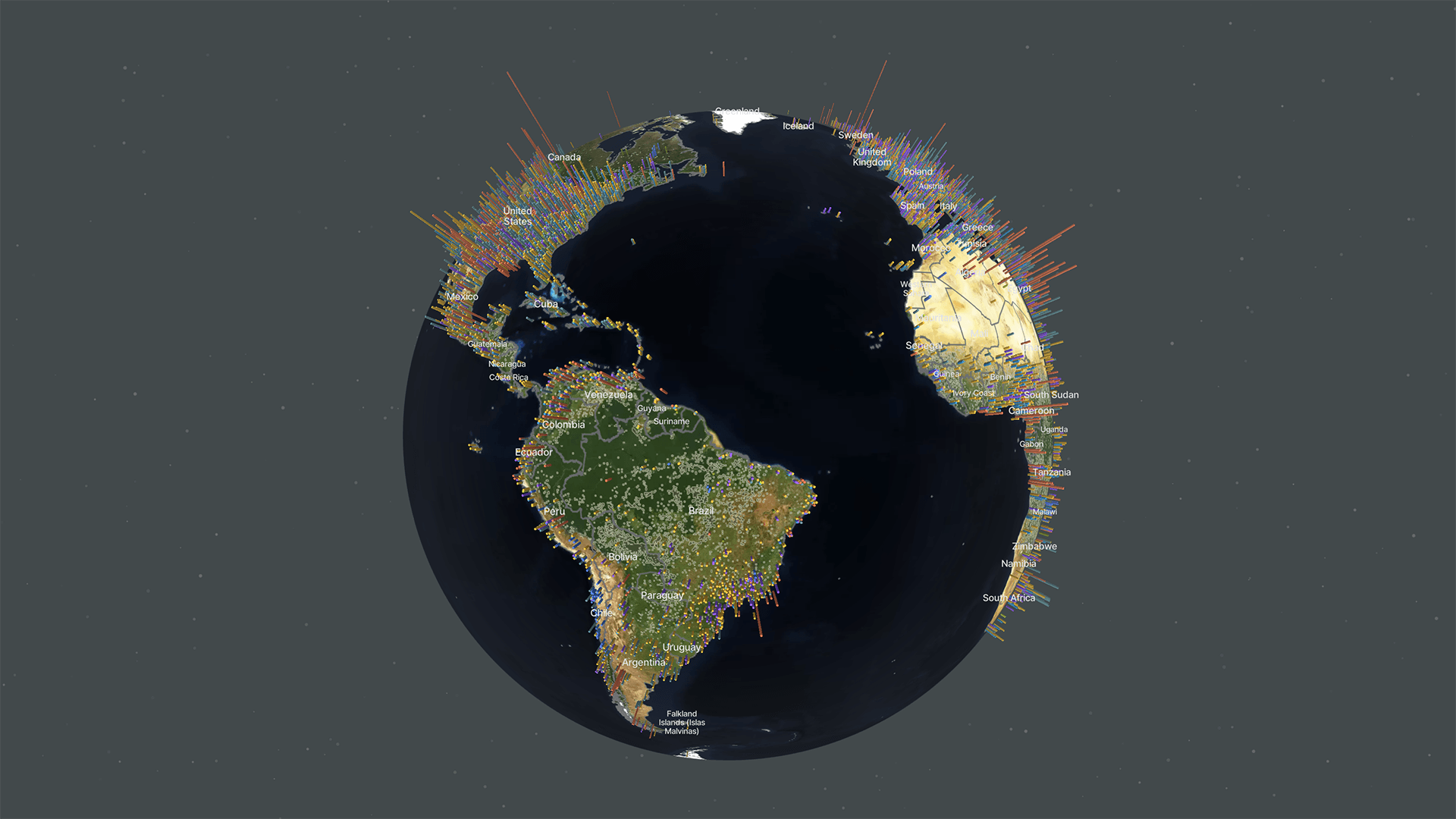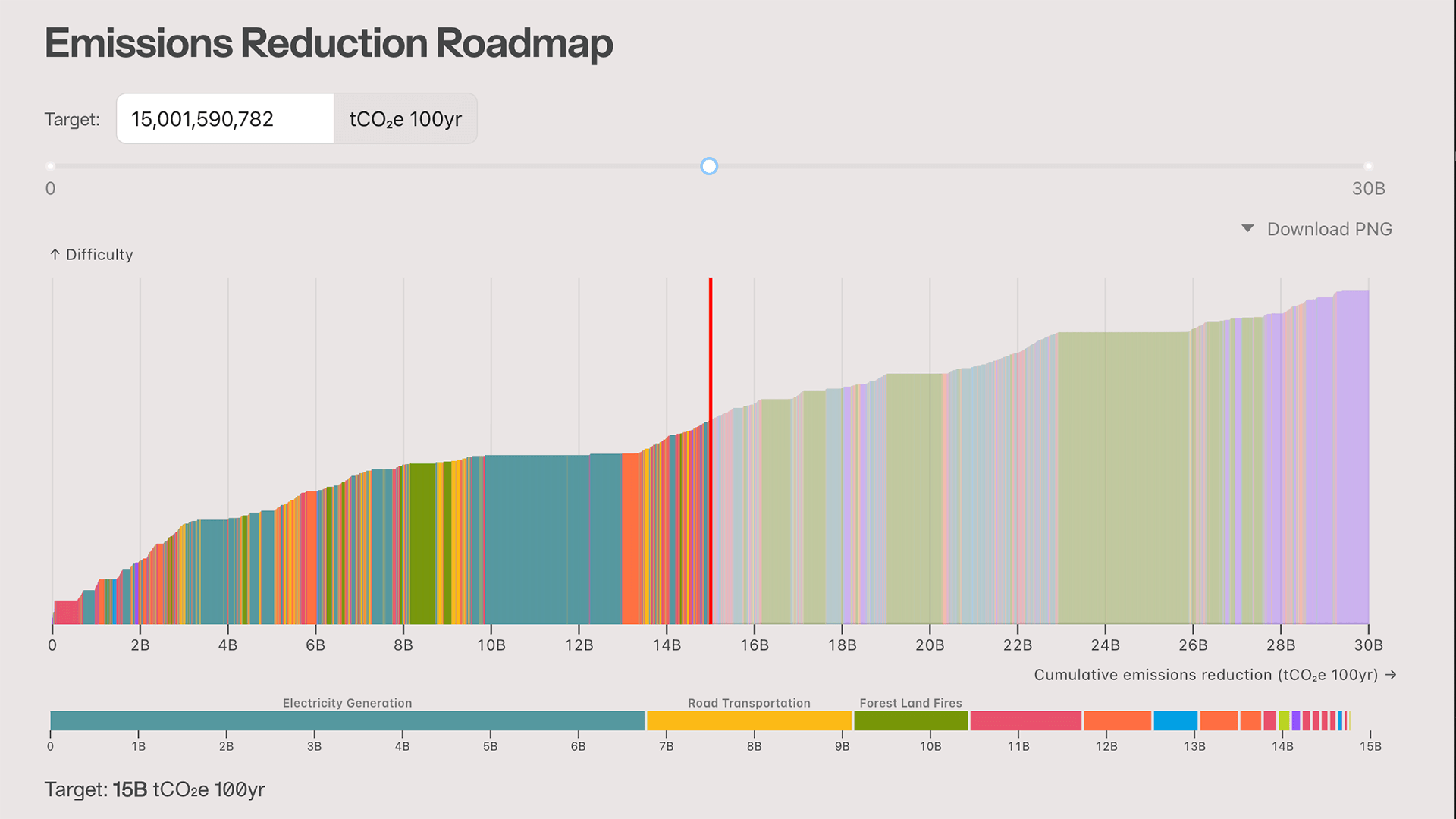Conversations With the Coalition: Deborah Gordon

As part of an ongoing Climate TRACE series, we are interviewing individual coalition members about their work. We recently sat down with Debbie Gordon, Senior Principal, Climate Intelligence atRMI, where she manages the team working on oil and gas solutions with a focus on mitigating methane using measured and modeled emissions data to catalyze low-emissions market choices.
Which emissions sector are you focused on, and why?
We are working to advance comprehensive visibility of emissions on the industrial side of the oil and gas sector. That includes production — the extraction, processing, and transport of oil, gas, and petroleum products — as well as refining and petrochemicals manufacturing. So it's everything on the industry side, before it gets marketed to consumers.
What is your approach to estimating these emissions?
For the last decade we have been developing and expanding a model called the Oil Climate Index Plus Gas (OCI+), which evaluates emissions through the entire supply chain using analytics initially developed for the Low Carbon Fuel Standard in California. This involves a couple of different emissions models — OPGEE and PRELIM — that use engineering life-cycle analysis to estimate how much energy and how many emissions result from taking oil and gas out of the ground, as well as processing and transporting it. These models input measurement data from satellites, flyovers, and field studies. And we are increasingly incorporating empirical data into our oil and gas industry emissions estimates with the launching of new methane satellites, especially those measuring super-emitting infrastructure such as Carbon Mapper and EMIT and area emissions from MethaneSAT.
Could you talk more about the data that goes into these models?
We use activity data, looking at things like how much oil and gas are being produced, ratio of oil to gas, composition of the gas and weight of the oil, field depth and pressure, and the amount of gas that is flared or vented. We consider the same variables that an engineer would gather in order to produce that field and refine and transport its resulting resources. The oil and gas industry employs equipment and conducts operations that use a lot of energy and leak methane, thereby generating GHG emissions. We find a high variance in emissions intensities between otherwise equivalent barrels of oil and gas. So, when comparing our results to the emissions that companies self-report, we tend to find undercounting because companies generally use basic emission factors. On the other hand, we endeavor to obtain specific field and operational characteristics that differentiate emissions and allow us to take more granular, comparative assessments of oil and gas industry emissions.
Where are you in the process of capturing this data?
Right now we have modeled two-thirds of the world's oil and gas supply volume. We've come a long way since we started in 2015 when we modeled only 5% of global supply. But in assessing even a small fraction of oil and gas, we found a huge difference in oil and gas emissions intensities. In other words, one equivalent barrel is very different in terms of its emissions from another equivalent barrel. The hypothesis of the project was: if these resources are very different chemically and physically — from oil sands that are thick like peanut butter to fracked shale gas that is more like cream soda — and they are processed and transported in a variety of ways — from oil refining to petrochemicals manufacturing and pipelined gas to LNG shipped around the globe — then the emissions must be very different. And this has been borne out. There's a very big variety of these resources and how we manage them. Now we're looking to get to 100% of all current oil and gas produced in the world modeled and accounted for by Climate TRACE.
What are key challenges you’ve encountered?
A roadblock for us in estimating country and asset emissions is gathering oil and gas production volume data. Getting this data is limiting and expensive. Oil and gas production is not publicly transparent. But this is a major determinant in emissions. Without it, decision makers need to trust self-reported emissions, which are not guaranteed to be accurate or complete. For example, one company may only extract oil and gas and not process or transport it. Another company may refine oil but not produce it. Still other companies may have non-operating shares in other company’s assets. These arrangements — plus the fact that this industry is constantly in flux with mergers and acquisitions — can create blind spots where actual emissions go unreported. What's great about Climate TRACE is that we’re looking at every equivalent barrel of oil and gas that comes out of the ground. We don't concentrate on which company is responsible along the complex oil and gas supply chain — we care what the atmosphere sees.
There’s also the matter of computing time when we’re talking about modeling tens of thousands of individual oil and gas assets that flow forth in hundreds of millions of barrels each day. It takes time to run the models, generate uncertainties, and analyze mitigation scenarios. We're now working with our academic partners to automate and convert the OCI+’s underlying model (OPGEE) into Python. This allows us to model individual assets in a region before aggregating them to the country level for Climate TRACE.
Are there opportunities you’ve encountered?
On the opportunity side, a huge benefit of this enterprise is that so much of the world's oil and gas is coming from parts of the world that are very hard to transparently manage, such as Russia, Iran, Turkmenistan, and others. Even the US — with its diverse oil and gas assets and operations — is quite opaque. And because Climate TRACE is a global emissions platform, there is a huge value in its comparative analytics for parts of the world that don't self-report sufficiently or at all. The need to assess the entire globe has motivated RMI to delve ever deeper because it's not enough to manage oil and gas in isolation. It has to be measured everywhere to sufficiently manage it worldwide.
Other huge opportunities I see are more satellites coming online — especially non-governmental satellites being launched by EDF and Carbon Mapper. This will allow us to build more empirical methane and CO2 data into our Climate TRACE emissions. Given the high variability in real-world oil and gas industry emissions, having a spatial and temporal check from orbiting satellite instruments will be instructive. I would also put data acquisition in the opportunity category because to the extent that we can produce more public data for oil and gas activity — like aggregated production volumes, gravities, sulfur content, certain basic information about these resources — it's going to be a boon for the world to have greater visibility into the emissions associated with oil and gas development.
How can these oil and gas data support target setting and emissions reductions?
At COP 28, the Oil and Gas Decarbonization Charter (OGDC) was signed by 50 oil and gas companies that agreed to “align around net zero by or before 2050, zero-out methane emissions by 2030, eliminate routine flaring by 2030, and to continue working towards industry best practices in emission reductions”. I think at COP29 in Azerbaijan — one of the oldest oil-producing nations — there will be critical check-ins on OGDC and the Global Methane Pledge signed at COP26 in Glasgow. Methane emissions are going to be front and center. Climate TRACE data show that methane emissions (from oil and gas and other key sectors) are trending steady and not being cut in accordance with global pledges. Yet, solutions are at the ready, especially for the oil and gas industry because there's profit to be made by not leaking methane gas. In other words, when you waste gas and you throw it into the atmosphere, you're not selling it and you’re damaging the climate. Climate TRACE helps decision makers prioritize their leakiest assets to stop methane from leaking. In this decisive decade, Climate TRACE can help address real-world policy questions about opportunities to pinpoint and cut oil and gas and other sector GHG emissions.
Interviewed by Daisy Simmons.


